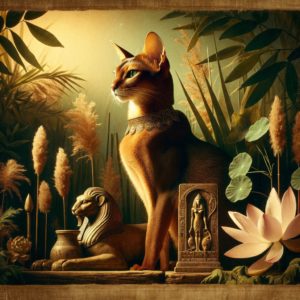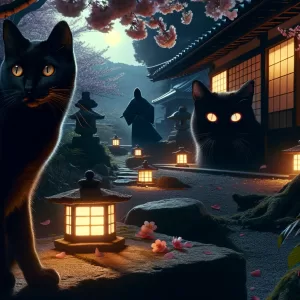In the rich tapestry of cultural symbols and legends, the Maneki Neko, or the beckoning cat, stands as a charming emblem of luck and prosperity in Japanese folklore. More than just a whimsical figurine, the Maneki Neko is a manifestation of ancient beliefs and cultural nuances, embodying the mystical allure of felines and their perceived powers to attract good fortune. This article delves into the origins, significance, and enduring appeal of this iconic cat, exploring how it has become a beloved symbol transcending cultural boundaries.
The Origin and Mythology
The story of Maneki Neko is shrouded in various legends, each contributing to its mystical allure. One popular tale recounts a struggling shop owner whose fortunes turned when a cat, sitting by his shop door, raised its paw in a beckoning gesture, drawing customers. Another legend speaks of a wealthy man who took shelter under a tree during a storm; a cat beckoning him inside a temple saved him from a lightning strike. These stories, rooted in folklore, highlight the Maneki Neko’s role as a harbinger of good fortune and safety.
Symbolism and Variations
The iconic pose of the Maneki Neko, with one paw raised and often holding a coin, is laden with symbolism. A raised left paw supposedly attracts customers, while a raised right paw invites wealth and good luck. The coin it holds, known as a koban, further emphasizes its role in bringing economic prosperity. The variations in colors, from white for happiness to black for warding off evil, add layers of meaning and charm to this cultural symbol.
Cultural Impact and Global Reach
Originally a Japanese symbol, the Maneki Neko has found its way into various cultures, adorning businesses and homes worldwide. Its universal appeal lies in its simple yet powerful promise of bringing good luck. The Maneki Neko has evolved into a global icon of welcome and fortune, reflecting the interconnectedness of modern cultures and the universal human quest for prosperity and protection.
The Maneki Neko in Art and Popular Culture
Beyond its traditional role, the Maneki Neko has inspired art, fashion, and pop culture, appearing in various forms from sculptures to graphic designs. Its cute, inviting appearance has made it a favorite subject in contemporary art, symbolizing not only luck but also the playful and mysterious nature of cats.
More Than Just a Lucky Charm
The Maneki Neko stands as a fascinating blend of folklore, symbolism, and cultural identity. It’s more than just a lucky charm; it’s a testament to the enduring power of ancient beliefs and their ability to adapt and resonate in the modern world. In the beckoning paw of the Maneki Neko, we find a symbol of hope, a gesture inviting not just wealth and luck but also a deeper appreciation of cultural heritage and mystical traditions.








